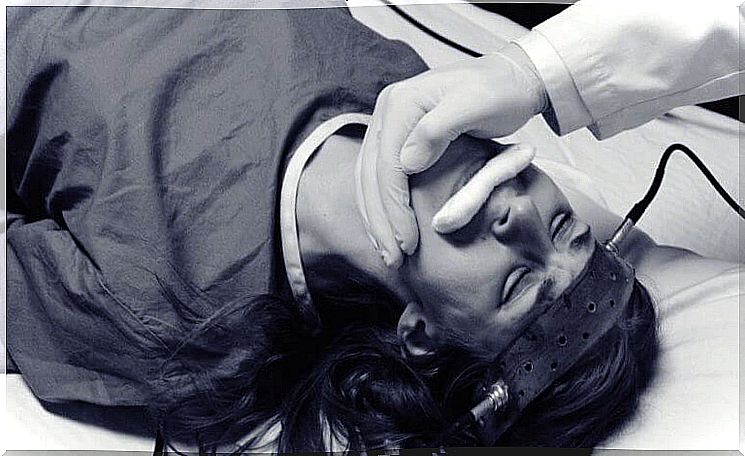Shock Therapies: Benefits And Risks

The label of shock therapies covers several therapies that are very different from each other. What they have in common, as the name advertises, is that they have a strong impact. We are talking about a stimulus that must be able to induce a change in the person who has been exposed to it.
Apparently, it was the ancient Greeks who first tried shock therapies. It is known that they applied something of this style to those with a high degree of agitation. There are references that anxiety was treated by inducing asphyxia. Hence the questionable principle that a strong emotional experience can erase another prior problem.
Shock therapies come from psychiatry. First was insulin shock and cardiazol therapy. Apparently, administering an overdose of these substances caused improvements in symptoms in mental patients. Electric shocks were later introduced, a highly controversial type of treatment that is still used today.
Over time, different techniques appeared that were called shock therapies . They involve everything from walking on smoldering embers to publicly announcing individual failures. In all cases, the principle is the same. That is, exposing the patient to an emotional experience that is too intense to cause changes in their behavior.
Some stories about shock therapies
It is not easy to assess the relevance and effectiveness of shock therapies. Of course, when a person is subjected to an experience that borders on the traumatic , he obviously has to change. The question is whether this change really solves the problem you want to fix, or whether, if you do, the change will be lasting.

There are several controversial aspects in the history of shock therapies. They began to be formally used to treat mental illnesses in the 16th century. The data supporting their effectiveness are not very reliable, as this information has never been systematized or treated in a strictly scientific way.
Later, Ugo Cerletti, an Italian neurologist, made a curious observation. He detected that the pigs were being fed electricity to make them more docile before being taken to the slaughterhouse. There he got the idea that a similar practice could be applied to human beings. That’s how electric shocks were born.
Benefits and risks of shock therapies
Classic shock therapies continue to exist and also continue to be controversial. For many, what they do is induce brain damage. With that, some states of psychotic agitation disappear. However, most, if not all, the price is too high.
There are documented cases where these shock therapies have caused permanent injury or cardiorespiratory arrest. In other words, they can lead to death. There are also references to people who were left in a vegetative state after these procedures.
Shock therapies are still used mainly for cases of severe depression. There are a good number of people in the world who claim to have benefited from these procedures. It is possible that this is so. A patient is also likely to take these treatments as severe punishment and therefore inhibit certain behaviors that doctors do not want him to exhibit. In any case, the controversy is served.

Shock Therapies and Psychology
Now, there is a form of shock therapies that are much more harmless. Psychologists use them mainly to treat phobias. What is involved in this case is exposing the patient, directly, to his own fears. He is pressured to do so, but at the same time he is accompanied by the doctor.
Those who have been treated with this type of therapy report that they have had to face real agony before exposing themselves to the fear that plagues them. However, when they succeed and don’t escape, the opposite occurs. They are filled with well-being and self-confidence. In general, if we talk about shock therapy – there is also progressive exposure – it is necessary to do it only once so that the phobia disappears.

In psychology there is nothing that can be considered absolute truth. Each person is a world. What is beneficial to one person can be disastrous to someone else. Therefore, neither shock therapies nor other treatments should be decided without a thorough evaluation of the case being treated.









